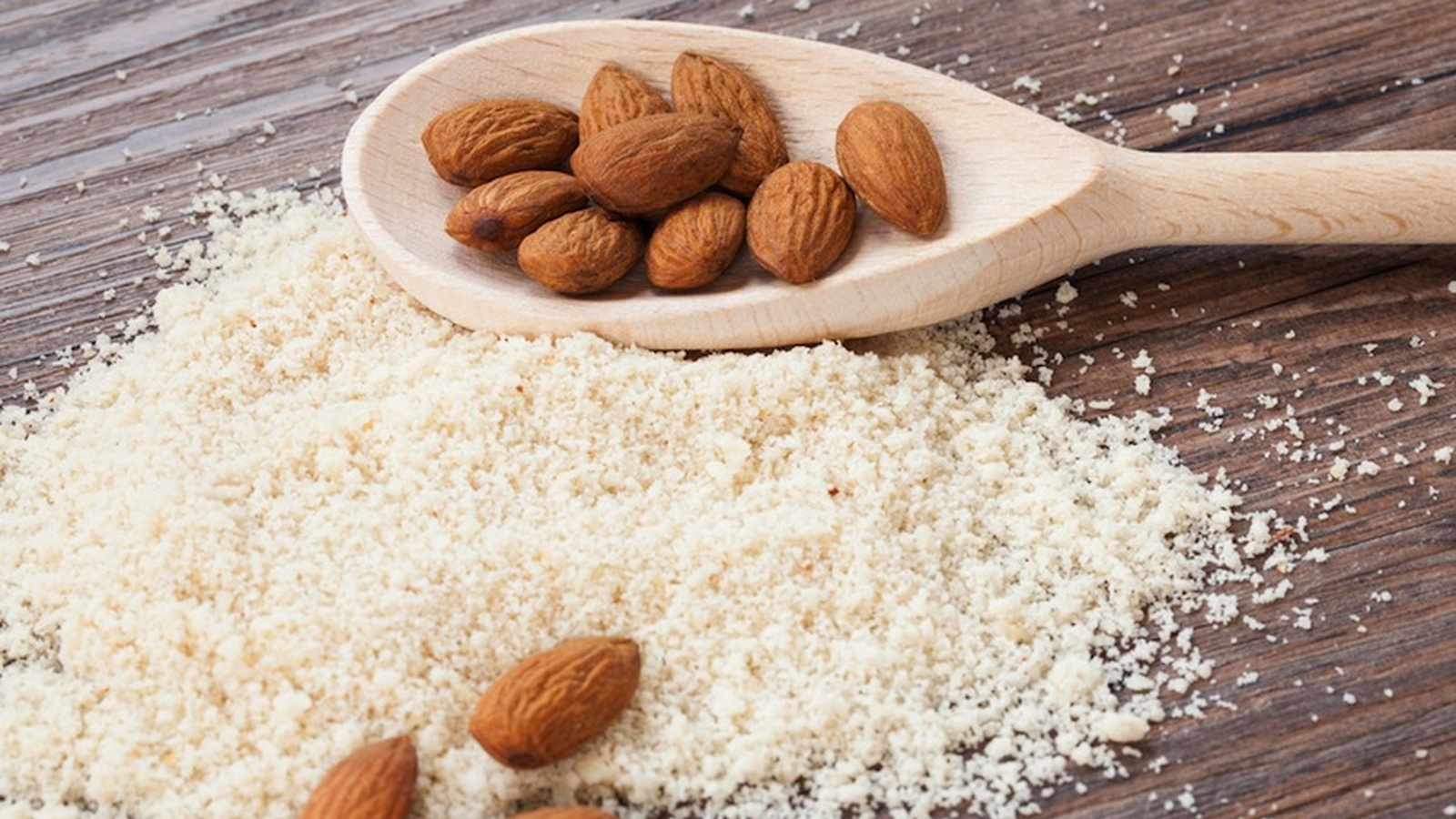Your Complete Guide of Paleo Flours
If you eat within the Paleo realm, you’re probably already an expert on almond flour and coconut flour, but what about cassava, chestnut and tigernut flour? Although flours shouldn’t be a staple to your Paleo eating, variety is always key, even with the flours you’re using! Let’s review the more common flours and explore the potential to add the new flours in your diet.
Almond Flour
Almond flour is made from ground up blanched almonds. It is the best tasting Paleo flour, IMO. Neutral on the palate and an oh-so-moist crumb! When you want muffins, waffles, cakes or essentially any baked good, almond flour has your back. As a Paleo-eater, being aware of the sourcing of my food is a must. I tend to go easy on almond flour because because it takes 1.1 gallons of water to make 1 almond and most US almonds come from California which unfortunately is in an exceptional draught right now. Almonds are much lower in carbs and somewhat higher in protein compared to coconut flour, but for another reason to watch your almond flour intake, almonds can also add to your dietary intake of omega-6 PUFAs.
Coconut Flour
Almond flours’ rival. Coconut flour is ground up coconut meat after it has been pressed for coconut milk. It is a much more absorbent flour and higher in fiber when compared to almond flour (10 grams versus 3 grams from ¼ cup). Coconut flour recipes tend to call for very little amounts of the flour and a high amount of moisture, typically in the form of eggs. It’s so good at absorbing liquid because it is extremely high in inulin fiber. FYI - this highly soluble and viscous and highly fermentable fiber doesn’t tend to jive well with anyone who has FODMAP, SIBO or IBS issues. Coconut has a more generic, slightly sweet flavor and can be used where you would also use almond flour - brownies, muffins, cakes, pizza crust, etc. I like to use it as a coating for things like for chicken fingers, because I tend to find the texture of coconut flour to be dry in recipes for baked goods.
Cassava Flour
Cassava (also known as Yuca) is a root vegetable. Cassava is a staple food for half a billion people across Africa, Asia, and Latin America. If you’re not familiar with cassava flour, you might be with tapioca flour. Tapioca flour comes from the cassava plant, used to make tapioca pudding. Tapioca is the bleached and extracted starch of the cassava root while cassava flour is the whole root which includes the fiber: peeled, dried, and ground. Cassava is traditionally used in the same proportions as wheat flour in most cases, except for yeast-based recipes. This flour is known for a clean, smooth, neutral flavor and similar in texture to wheat flour. Cassava flour can be used for baked goods, or the root can be boiled or mashed like potatoes or fried. Cassava is allowed on autoimmune paleo diets, but is higher in carbohydrates, about 78 grams per cup with about 4 grams of fiber. One caveat is that it when buying from a grocery store, the roots must be boiled before it’s eaten because it can cause cyanide poisoning if raw! (The sweet variety contains less hydrogen cyanide then bitter varieties.) The popular Asian food, bamboo shoots similarly have this property. Also, it’s important to note that a small number of people are also allergic to the plant — the American Cancer Society warns that those with a latex rubber allergy might be more susceptible.
Chestnut Flour
While chestnuts are tree nuts, their composition is starchier and less fatty when compared to other nuts. Chestnuts would be akin to plantain, yam and sweet potatoes. Chestnut flour can be used to replace almond flour, but it has a strong, nutty flavor. They can be eaten either roasted over an open fire (couldn’t help myself!), raw, baked or boiled. All you Paleo peeps might be wondering about phytic acid in chestnuts. You should know that the content for chestnuts is surprisingly low! There is about 47mg/100g of phytic acid in chestnuts while you’ll find 1,280mg/100g in almonds and 760mg/100g in walnuts. For you low-carb folks, you can find 53 grams of carbs in 100 grams of chestnuts, 5 of which are from fiber. 100 grams also has a respectable daily values: 59% manganese, 17% potassium, 25% copper, 43% vitamin C and 25% B6.
Tigernut Flour
First, let’s get this out of the way, tigernuts are not nuts! I know it has it in the name, which is quite deceiving, but it’s actually a root vegetable. Alright, now you have me back on your good side, want to learn more, right?! Tigernut flour is known to have a pleasing flavor, with no weird aftertaste sensed from some gluten-free flours and has a 1:1 replacement ratio to wheat flour. You can eat tigernut in baked goods, whole, raw tigernuts, soaked overnight tingernuts (in filtered water to soften them up) or tigernut milk as a dairy alternative. To me, tigernuts have a semi-sweet flavor. Once ounce of tigernuts has 19 grams of carbohydrates and 10 grams of fiber – holy moly fiber! The prebiotic goldmine that is tigernuts will help your colon bacteria make lots of babies. Interestingly, they are also high in monounsaturated fats too!
What`s Your Favourite Paleo Flour?
Do you have a passion for nutrition & natural healing?. Learn more about the Food Matters Nutrition Certification Program here.










